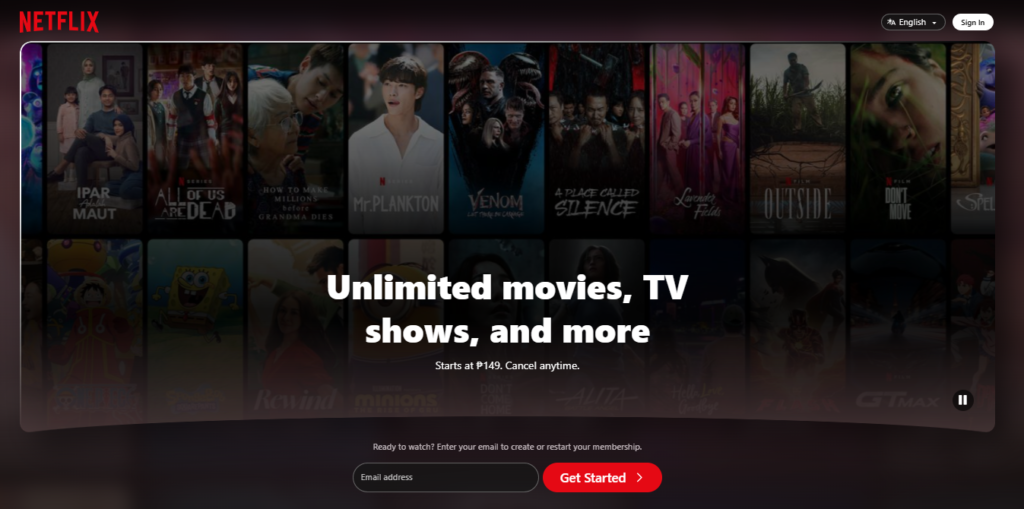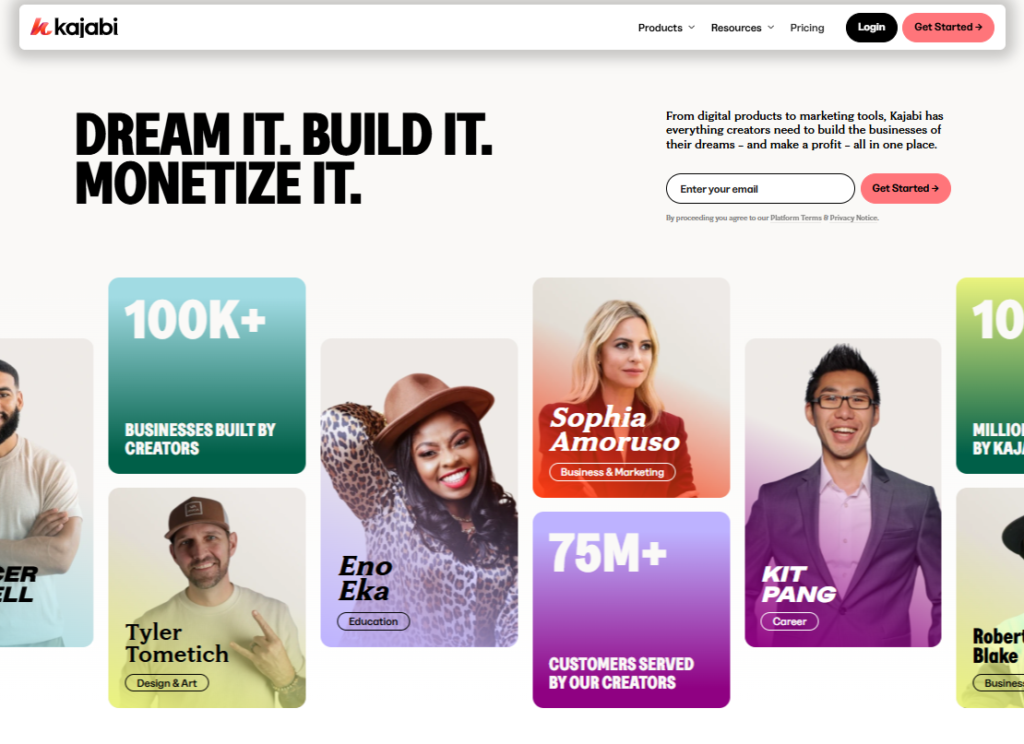For More Free Videos, Subscribe to the Rhodes Brothers YouTube Channel.
“Success is nothing more than a few simple disciplines, practiced every day.” – Jim Rohn

Whether you’re looking to build passive income, create a thriving online community, or share your expertise with the world, starting a membership is one of the most attainable and rewarding ventures. With the rise of subscription-based services like Netflix and Spotify, people are now accustomed to paying monthly for ongoing value. This creates a golden opportunity for you to launch a membership model that delivers value, builds relationships, and generates consistent revenue.
John S. Rhodes from the Rhodes Brothers emphasizes, “The best membership to start is the one you are about to start. You already have enough content and ideas to launch a membership right here, right now.”
In this comprehensive guide, we’ll walk you through everything you need to know about starting a membership, from choosing the right niche to delivering continuous value. Let’s dive in and get you started on building your dream membership!
TL;DR
If you’re short on time, here’s a quick overview of what you’ll learn in this post:
- What a membership is: A subscription-based model that delivers ongoing value to members in exchange for regular payments.
- How to pick the best membership to start: Focus on evergreen niches like money, health, and relationships for maximum reach and impact.
- Types of content you can offer: Templates, live Q&A, coaching sessions, case studies, downloadable resources, and more.
- Step-by-step guide: Practical advice on launching your membership, even if you’re a total beginner.
- Common mistakes to avoid: Learn what NOT to do when starting and maintaining your membership.
- Proven tools and strategies: Discover platforms and resources to make membership management seamless.
- Keep reading for actionable insights, expert advice, and strategies to build a membership that not only succeeds but thrives.
What is a Membership (and Why It’s So Powerful)?
At its core, a membership is a subscription where members pay regularly (typically monthly) for access to exclusive content, resources, or community benefits. Think of it like Netflix: as long as you pay, you get access. The moment you stop, the access disappears.

What makes memberships so powerful is the continuous value exchange. Members feel they’re getting ongoing benefits, and you, as the creator, build a predictable income stream.
Why Start a Membership?
- Recurring Income: Memberships create a steady flow of income, unlike one-time product sales.
- Community Building: You can foster a dedicated audience that feels connected to your expertise or brand.
- Scalability: With the right setup, you can grow a membership to thousands without needing to increase your workload proportionally.
Step-by-Step Guide to Starting a Membership
Starting a membership is a rewarding way to build a community and generate recurring income. Let’s break down each step in detail, complete with tools, examples, and actionable tips to help you get started.
Choose Your Membership Niche
Your niche will determine your membership’s focus, audience, and content. Picking the right niche is essential for creating an engaged community and ensuring long-term success. According to John S. Rhodes, successful memberships are built around “continuous value” and often align with evergreen topics like:
- Money: Examples include teaching people how to budget, grow wealth, start side hustles, or invest in real estate.
- Example: A membership that provides weekly financial tips, monthly budgeting templates, or live workshops on investment strategies.
- Tool: Google Trends – Use it to explore trending financial topics and find gaps in the market.
- Health: Examples include fitness programs, meal plans, mental health resources, or niche areas like yoga or keto diets.
- Example: A fitness coach could create a membership offering weekly workout videos, a library of meal prep guides, and live Q&A on nutrition.
- Tool: MyFitnessPal – Use it to identify trending health needs or partner with their tools for added value.
- Relationships: Examples include dating advice, parenting tips, or communication skills.
- Example: A membership for parents that provides monthly parenting guides, live sessions on managing screen time, and a private community to share challenges.
- Tool: Facebook Groups – Research active parenting or relationship-focused groups to understand the audience’s needs.
Pro Tip: Use these platforms to identify trending niches:
- YouTube: Search for topics in your niche and analyze the most popular channels.
- Amazon: Look at the bestsellers in books or products related to your niche.
- AnswerThePublic: Find questions that people are asking about your potential niche.
Define the Value You’ll Deliver
The success of your membership hinges on the value you provide. Ask yourself: What can I deliver consistently that members will find valuable?
Here are a few tried-and-tested membership content ideas:
- Templates and Tools
-
- Example: If you’re a digital marketer, you could provide plug-and-play email templates, social media post templates, or a monthly SEO checklist.
- Tool: Canva Pro – Create and share templates for social media, presentations, or resumes.
- Live Q&A or Coaching
-
- Example: A life coach could host a live Q&A session every month, helping members overcome personal challenges.
- Tool: Zoom – Use it for live sessions with your members.
- Exclusive Content
-
- Example: A photographer could provide exclusive tutorials on editing techniques or case studies on successful shoots.
- Tool: Vimeo – Host private video tutorials that only members can access.
- Community Access
Example in Action: A Canva expert could create a membership offering:
- Weekly Canva tutorials.
- Library of customizable templates.
- Monthly live design critique sessions.
Pro Tip: Always ask yourself: What problem can I solve for my members every single month?
Choose the Right Platform
The platform you choose should make it easy to manage your membership and deliver value. As John S. Rhodes says, “If technology is preventing you from starting, you’re focused on the wrong thing.”
Here are some beginner-friendly platforms to consider:

- Kajabi: An all-in-one platform for memberships, courses, and marketing.
- Best for: Comprehensive memberships with multiple content types (e.g., video, downloads, community).
- Teachable: Great for memberships focused on educational content.
- Best for: Course creators or educators.
- Patreon: Perfect for creators offering exclusive content to their audience.
- Best for: Artists, podcasters, and creatives.
- Gumroad: Simple and affordable for selling memberships and digital products.
- Best for: Small-scale memberships or beginner entrepreneurs.
Pro Tip: Start with a simple platform (like Patreon or Gumroad) if you’re new to memberships. You can always upgrade to more robust tools as your membership grows.
Create Your Content Plan
Consistency is key to keeping members engaged. Plan your content in advance to ensure you’re always delivering value.
Content Ideas:
- Video Tutorials: Share step-by-step guides or training sessions.
- Downloadable Resources: Provide PDFs, templates, or graphics.
- Live Workshops or Q&A Sessions: Offer direct access to your expertise.
- Resource Library Updates: Add fresh content regularly to keep members excited.
Example in Action: A freelance writer could offer:
- Weekly writing prompts.
- Monthly live Q&A on freelancing challenges.
- Access to a growing library of pitch templates for various industries.
Tools to Plan Your Content:
- Trello: Organize your content ideas and schedule.
- Asana: Manage tasks and deadlines for creating and uploading content.
- Google Calendar: Schedule live sessions or content release dates.
Pro Tip: Start with a small library of content when you launch (e.g., 3-5 resources). Then, add new content on a regular schedule to keep members engaged.
Launch and Market Your Membership
Once your membership is ready, it’s time to attract your first subscribers. Use these strategies to spread the word:
Email Marketing
- Build an email list of potential members before launching.
- Send a series of emails highlighting the benefits of your membership.
- Tool: Mailchimp – Create automated email campaigns to promote your membership.
Social Media Marketing
- Share sneak peeks of your membership content on Instagram, TikTok, or LinkedIn.
- Use testimonials or case studies from early testers to build trust.
- Tool: Later – Schedule and manage your social media content.
Collaborations
- Partner with influencers or creators in your niche to promote your membership.
- Offer them affiliate commissions for every new member they refer.
- Tool: ThriveCart – Manage affiliate programs with ease.
Pre-Launch Discounts
- Offer a special “founding member” rate to early adopters.
- Create urgency with limited-time offers (e.g., “Join before [date] to lock in this price!”).
Example in Action:
- A fitness coach could use Instagram Stories to showcase behind-the-scenes content from their membership.
- They could send an email offering a 20% discount to the first 50 subscribers.
Pro Tip: Don’t shy away from personal outreach. Reach out to friends, colleagues, or loyal followers directly to invite them to join your membership.
By following these steps and leveraging the tools and examples provided, you’ll be well on your way to creating a thriving membership. The key is to provide continuous value, engage with your members, and consistently refine your offerings based on their feedback. You’ve got this!
Actionable Steps to Start and Grow Your Membership
No matter your experience level or demographic, starting a membership is achievable if you follow a clear plan. Below are practical, step-by-step strategies tailored to beginners, intermediate creators, and advanced entrepreneurs. By addressing each level, you’ll find advice that meets you where you are.
For Beginners: Starting Your First Membership
If you’re new to the world of memberships, keep it simple and focus on getting started. Don’t overcomplicate things—your first goal is to validate your idea and attract your first subscribers.
Identify a Problem You Can Solve
- Think about your knowledge or skills. Ask yourself: What do people often ask me for help with?
- Look for a specific problem you can solve consistently, such as:
- Helping small businesses with social media marketing.
- Teaching beginners how to cook healthy meals.
- Coaching young professionals on improving interview skills.
Tool: Use AnswerThePublic to find questions people are asking in your niche.
Start Small with a Simple Offer
- Launch with a minimum viable membership (MVM): Offer 1-2 types of content to keep it manageable.
- Example: If you’re a graphic designer, provide one Canva template per week and a monthly live tutorial.
Tool: Use Patreon or Gumroad to create a simple membership with minimal setup.
Attract Your First Members
- Start with your existing network: Friends, family, colleagues, and social media followers.
- Offer early adopters a discounted “founder’s rate” to incentivize them to join.
Tips for Beginners:
- Focus on delivering value, not perfection.
- Ask your early members for feedback to improve your membership.
For Intermediate Creators: Taking Your Membership to the Next Level
If you’ve already launched a membership and are looking to grow, it’s time to focus on scaling your content, marketing efforts, and member engagement.
Expand Your Offerings
- Add diverse content types to cater to different learning styles:
- Video tutorials for visual learners.
- Downloadable guides for readers.
- Live Q&A sessions for interactive learners.
- Example: If you run a fitness membership, add meal plans, recipe videos, and a private coaching option.
Tool: Use Canva to create professional-looking resources like workout calendars or recipe cards.
Leverage Social Proof
- Ask current members for testimonials or case studies.
- Showcase success stories on your website and social media.
Example: A writing coach could share how a member landed their first freelance client using their templates.
Tool: Use Trustpilot to collect and display reviews.
Automate and Streamline
- Automate repetitive tasks like email notifications and content delivery.
- Example: Schedule weekly content drops using Kajabi or Teachable.
- Use email automation tools like Mailchimp to send reminders for live events or new content.
Increase Member Engagement
- Create a private community where members can connect, ask questions, and share experiences.
- Example: Use Slack or Discord for an interactive member forum.
Pro Tip: Host monthly challenges or competitions to keep members motivated and active.
For Advanced Entrepreneurs: Scaling Your Membership for Maximum Profit
If you already have a successful membership, focus on scaling through advanced strategies like upselling, partnerships, and creating multi-tiered pricing structures.
Introduce Tiered Memberships
- Offer different levels of access at different price points:
- Basic: Access to core content.
- Premium: Includes live coaching or exclusive resources.
- VIP: One-on-one consultations or advanced tools.
- Example: A marketing expert could offer:
- Basic: Monthly templates and tutorials.
- Premium: Group coaching calls.
- VIP: Personalized marketing strategy sessions.
Tool: Use Kajabi to manage multiple tiers within one platform.
Upsell Additional Services
- Offer one-time purchases or add-ons to your members.
- Example: Sell exclusive eBooks, courses, or personalized consultations.
Tool: Use ThriveCart to create upsell funnels.
Partner with Influencers or Brands
- Collaborate with creators or businesses in your niche to cross-promote your membership.
- Example: A fitness coach could partner with a supplement brand to offer members discounts or freebies.
Pro Tip: Use affiliate marketing to reward partners for bringing new members.
Optimize Member Retention
- Focus on keeping your existing members happy and engaged.
- Send personalized thank-you messages.
- Offer loyalty rewards, like bonus content for long-term members.
- Use surveys to identify areas for improvement.
Tool: Use Typeform to create quick and engaging surveys for member feedback.
Invest in Paid Advertising
- Scale your reach with targeted ads on platforms like Facebook, Instagram, or Google.
- Example: Run an ad campaign offering a free trial to attract new members.
Tool: Use Facebook Ads Manager to create and manage ad campaigns.
Common Mistakes to Avoid When Starting a Membership
Starting a membership is an exciting journey, but it’s also easy to fall into traps that can derail your success. Avoiding these common mistakes will not only keep your membership thriving but also ensure your members remain engaged and satisfied. Let’s dive deeper into each mistake and how you can counter them effectively.
Mistake 1: Lack of Clear Value
Why It’s a Problem:
If members don’t understand the tangible benefits of staying subscribed, they’ll cancel. People want to know exactly what they’re getting for their money—whether it’s exclusive access, ongoing support, or tools that solve their problems. Without a clear value proposition, your membership risks becoming irrelevant.
How to Avoid It:
- Define Your Core Offer: Be specific about what members will receive, such as weekly tutorials, live coaching, or downloadable templates.
- Example: If you’re running a social media marketing membership, clearly state, “Join for 10 customizable templates per month, live Q&A sessions, and exclusive access to a private community.”
- Focus on Outcomes: Instead of just listing features, emphasize the results members can achieve. For instance, “Learn how to double your Instagram following in 30 days” is far more compelling than “Access to Instagram tips.”
Pro Tip: Regularly remind members of their benefits through emails, updates, and announcements. Keep the value front and center.
Mistake 2: Overpromising
Why It’s a Problem:
It’s tempting to promise the moon to attract members, but failing to deliver on those promises leads to disappointment and lost trust. Once trust is broken, it’s nearly impossible to win members back.
How to Avoid It:
- Set Realistic Expectations: Only promise what you can deliver consistently. For example, if you can commit to one live Q&A per month, don’t promise weekly sessions.
- Start Small: Begin with manageable deliverables and scale up once you’ve established a routine.
- Example: Instead of offering unlimited access to one-on-one coaching, limit it to the first 10 members or offer group coaching instead.
- Underpromise, Overdeliver: Surprise your members with unexpected bonuses or additional content.
Pro Tip: Be transparent if something changes. For instance, if a promised feature is delayed, communicate why and provide updates. Members appreciate honesty.
Mistake 3: Ignoring Feedback
Why It’s a Problem:
Your members are your best source of insight. Ignoring their feedback can lead to dissatisfaction and churn. If they feel unheard, they’ll leave—and worse, they might share their negative experiences publicly.
How to Avoid It:
- Actively Seek Feedback: Use surveys, polls, or open-ended questions to understand what members love and what they want more of.
- Example: Send a quarterly survey asking, “What’s one thing we could improve about your membership experience?”
- Engage in Conversations: Respond to comments, emails, and community discussions. Show your members that their opinions matter.
- Implement Changes: If recurring feedback points out an issue, act on it. For example, if members want more live sessions, try adding one every quarter.
Tool: Use Typeform or Google Forms to collect feedback easily and analyze trends.
Mistake 4: Inconsistent Updates
Why It’s a Problem:
Memberships thrive on consistency. If members don’t see regular updates, they’ll assume the membership is stagnant and lose interest. Inconsistent updates can also make your membership feel less professional.
How to Avoid It:
- Create a Content Calendar: Plan your updates in advance and stick to a regular schedule. For instance, release new content every Monday or host a live session on the first Friday of each month.
- Batch Create Content: If you struggle with staying consistent, batch-create content in advance and schedule it for release.
- Example: Record 4 tutorials in one day and upload them weekly.
- Communicate Your Schedule: Let members know what to expect—and when. For example, send an email saying, “New resources drop every Thursday!”
Tool: Use Trello or Asana to organize your content schedule and stay on track.
Pro Tip: Even small updates, like a quick tip or a bonus checklist, can keep members engaged between major content drops.
Mistake 5: Underpricing
Why It’s a Problem:
Setting your price too low can devalue your membership and make it unsustainable. While it may attract members initially, it can lead to burnout as you struggle to deliver high-quality content for minimal returns. Additionally, low prices can give the impression that your membership lacks value.
How to Avoid It:
-
- Price Based on Value, Not Cost: Focus on the outcomes and benefits your membership provides. For example, if your membership helps people land higher-paying jobs, a $50 monthly fee is a small investment for members.
- Research Competitors: Look at similar memberships to understand market rates. Position yourself competitively, but don’t undercut yourself.
- Example: If similar memberships charge $30/month, consider pricing yours at $35-$40 if you offer more value.
- Offer Tiered Pricing: Create multiple levels of access so members can choose what suits their budget.
- Example:
-
-
- Basic: $15/month – Access to core content.
- Premium: $50/month – Includes live Q&A sessions.
- VIP: $100/month – One-on-one coaching.
-
Tool: Use Kajabi or Memberstack to implement tiered pricing easily.
Pro Tip: Test your pricing. Start with a higher price point and offer discounts for early adopters. You can always adjust based on demand and feedback.
Avoiding these common mistakes will set your membership up for success. By focusing on delivering consistent value, managing expectations, and listening to your members, you’ll create a thriving community that people want to be part of long-term.
Frequently Asked Questions
What’s the best membership platform for beginners?
Patreon and Gumroad are great for beginners due to their simplicity and low setup costs.
How much should I charge for my membership?
Consider your target audience and the value you’re offering. Most memberships range from $10 to $50/month.
How often should I update my membership content?
Aim for weekly or monthly updates to keep members engaged and subscribed.
Can I start a membership without a large audience?
Yes! You can start small and grow over time. Focus on delivering value to your initial members.
Do I need a community component in my membership?
While optional, community features like forums or live Q&A sessions can boost engagement and retention.
What type of content works best for memberships?
Templates, live sessions, case studies, and exclusive tutorials are highly effective.
How do I market my membership?
Use email campaigns, social media, and collaborations to promote your membership.
Can I outsource membership content creation?
Absolutely! You can hire freelancers to create content or manage parts of your membership.
What’s the difference between a subscription and a membership?
A subscription typically provides access to static content, while a membership focuses on continuous value and engagement.
How do I keep members subscribed long-term?
Deliver consistent value, listen to feedback, and foster a sense of community.
Your Membership Journey Starts Now
Starting a membership isn’t just about creating another revenue stream—it’s about building a community, delivering ongoing value, and positioning yourself as an authority in your chosen niche. It’s about nurturing relationships, sharing your expertise, and helping others solve problems or achieve their goals.
As John S. Rhodes said, “The best membership to start is the one you are about to start.” You already have the ideas and the passion to bring your vision to life. It’s time to take that first step and turn your knowledge and resources into something truly impactful.
Key Takeaways:
- Focus on a niche that aligns with your expertise and allows you to provide continuous value.
- Create a mix of content types, from templates and tutorials to live Q&A sessions and exclusive resources.
- Use beginner-friendly platforms like Patreon, Kajabi, or Gumroad to get started quickly.
- Avoid common mistakes like underpricing, inconsistent updates, or ignoring member feedback.
- Leverage tools like Canva, Zoom, and Slack to enhance your membership experience.
- Build a community and foster engagement to retain your members long-term.
Why wait? Start brainstorming your membership idea today! Take the first step by writing down the value you can provide and the audience you want to serve.
If you’re looking for more tips, inspiration, or guidance, be sure to check out the Rhodes Brothers YouTube Channel. Their videos are packed with actionable insights to help you succeed in your entrepreneurial journey.
The best membership to start is the one you kick off right now. The tools, knowledge, and resources are at your fingertips—get started today and make a lasting impact!
Resource List
Here are some fantastic resources to help you on your membership journey:
Books
- “Membership Economy” by Robbie Kellman Baxter
- “Subscribed: Why the Subscription Model Will Be Your Company’s Future” by Tien Tzuo
- “The Automatic Customer” by John Warrillow
Courses & Podcasts
- Membership Site Mastery by Stu McLaren
- Smart Passive Income Podcast by Pat Flynn (episodes on membership models)
- The Membership Guys Podcast by Mike Morrison
Tools
- Kajabi: For building and managing memberships.
- Teachable: Great for educational memberships.
- Slack/Discord: Build a community for your members.
- Zoom: Perfect for live Q&A and coaching calls.
- Canva: Create professional templates and resources.
- Stripe/PayPal: Simplify payment processing.
- Gumroad: Quick and easy for selling memberships.
Free Tools
- Google Trends: Research trending topics in your niche.
- AnswerThePublic: Discover what questions people are asking about your niche.
- ChatGPT: Generate ideas and draft content.
- Trello: Organize your membership content and tasks.





